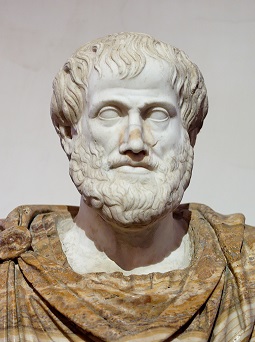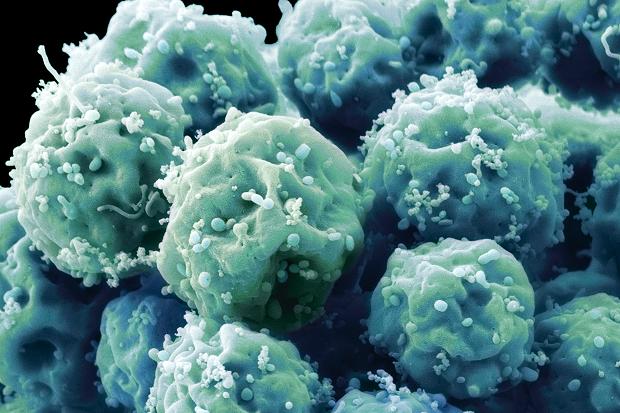Regenerative Medicine

Image: Artistotle
In 1992 the first statement referring to “Regenerative medicine” was published: “A new branch of medicine will develop that attempts to change the course of chronic disease and in many instances will regenerate tired and failing organ systems (1)”.
Even the term is relatively new, the first scientific script regarding regeneration is attributed to Aristotle, “The Generation of Animals” and his “salamander tails”(2), in which he described a theoretical regenerative capacity of living organisms, further sustained with several animal observations. Later on, the firsts modern age scientific scripts about the regenerative phenomena by Trembly, Reaumer and Spallanzani in the 18th century (3) encouraged further animal research.
Despite the philosophical and religious debate, the field of transplantation emerged with the first animal allograft transplant experiments of Hunter (4), followed by the first human nose restauration with tissue transposition by Carpue in 1981 (5), face and urethra reconstructions of Diffenbach (6), skin islets transplant of Reverdin (7) and the first attempts of corneal transplants of Riesinger and Bigger (8); all of them major contributors basis of the transplantation field and therefore main basis in the development of the actual field of regenerative medicine.
On the other hand, the cellular theory of Schleiden and Schwann (9) confirmed by Virchow´s microscope with a consequent popularization of Raspail´s statement: “omnis cellula ex cellula” gave for the first time the idea of the cell as the unit of organisms (10) allowing the re-introduction of a replication model originally described by Remak in which a cell only arise from a cell (11), leaving the doors open to explore therapeutic options arising from one or few cells.
Jumping across to the early 20th century in which the scientific works of Harrison and Carrell in cell cultures gave way to tissue engineering development were the reproduction of tissues for clinical purposes was first applied (12). From that point on the growth of tissues from several biological materials for therapeutic purposes has been evolving enormously; with the skin studies of Green and Bell and the biogenic matrix of Vacanti (13), the term of tissue engineering was coined in 1989(14) providing another strong pillar to the regenerative medicine field, setting basis to develop therapeutic options.
The “Cohnheim hypothesis” (1867) in which the bone marrow is described as provider of reparative cells that regenerate wounds(15), is probably the first approach to one of the nowadays most active branch of regenerative medicine: stem cell transplantation. The hypothesis of cells with reparative potentials become reinforced by the introduction of the pluripotency concept by Kleinsmith and Pierce in the early 60s (16) and after more than a decade of several studies in 1981 Martin, Evans and Kaufman (17,18) were able to isolate the embryonic stem cell able to generate any tissue. The isolation and cultivation of the first human embryonic stem cell was achieved by Thomson in 1998(19) giving rise to a new era of knowledge. By the same time the evolution of Adult stem cells developed on the basis of Friedenstein studies over bone marrow derived cells (20) step forward with Caplan´s name acquisition of Mesenchymal stem cells and the description of the great differentiation capacity of these cells (21).
After intense contributions from different biomedical fields the term Regenerative Medicine was widely accepted and popularised since the beginning of 21th century.
The definitions varied form author to author but are become unified step by step. The National Institute of Health (NIH) in the United States of America define Regenerative Medicine as the process of creating living, functional tissues to repair or replace tissue or organ function lost due to age, disease, damage, or congenital defects (22). Steinhoff states that is a fast emerging interdisciplinary field of research and clinical therapies on the repair, replacement or regenerating of cells, tissues or organs in congenital or acquired disease (23). Meinschen define it as a process of creating living, functional tissues to repair or replace tissue or organ function lost due to age, disease, damage or congenital defects(24).
“While it could be said that regenerative medicine is what this journal publishes, that would be cyclical” states Mason (25), agreed with Dr. Mason we attend to define it, even though we know the definition will evolve. Today, we consider Regenerative Medicine as a medical field that include multidisciplinary research aimed towards clinical applications to develop therapies that repair, replace and regenerate cells, tissues, organs and systems.
Since the beginning, the Regenerative medicine field has been partially shadowed by misconception spread on the general population, financial interests, political issues and even other scientist groups against the field that need to be overcome every day.
As Isaac Newton may had felt, “we are now standing on the shoulders of the giants” and walking in the right direction. The Regenerative medicine field is now one of the most promising medical fields mainly because the principal aim is to cure diseases giving back the normal function to the organism without lifelong treatments, with the research community efforts directed principally by science.
References
- Kaiser LR. The future of multihospital systems. Top Health Care Financ. 1992;18(4):32–45.
- Aristotle, Peck AL. Generation of animals, with an English translation by A.L. Peck [Internet]. Cambridge Harvard University Press; 1943 [cited 2014 Dec 17]. 708 p. Available from:http://archive.org/details/generationofanim00arisuoft
- Dinsmore CE. A History of Regeneration Research: Milestones in the Evolution of a Science. Cambridge University Press; 2007. 248 p.
- Hamilton D. A History of Organ Transplantation: Ancient Legends to Modern Practice. University of Pittsburgh Pre; 2012. 578 p.
- Carpue JC. An account of two successful operations for restoring a lost nose. Plast Reconstr Surg. 1969 Aug;44(2):175–82.
- Lam SM. Johann Friedrich Dieffenbach: the many-sided Odysseus. Arch Facial Plast Surg. 2003 Jun;5(3):276–7.
- Fabre JW. Epidermal allografts. Immunol Lett. 1991 Jul;29(1-2):161–5.
- Crawford AZ, Patel DV, McGhee CN. A brief history of corneal transplantation: From ancient to modern. Oman J Ophthalmol. 2013 Sep;6(Suppl 1):S12–7.
- Clarke PGH, Clarke S. Nineteenth century research on cell death. Exp Oncol. 2012 Oct;34(3):139–45.
- Silver GA. Virchow, the heroic model in medicine: health policy by accolade. Am J Public Health. 1987 Jan;77(1):82–8.
- Magner LN. A History of the Life Sciences, Revised and Expanded. CRC Press; 2002. 456 p.
- Mather JP, Roberts PE. Introduction to Cell and Tissue Culture: theory and technique. Springer Science & Business Media; 1998. 247 p.
- Vacanti CA. The history of tissue engineering. J Cell Mol Med. 2006 Sep;10(3):569–76.
- Matsuda T, Akutsu T, Kira K, Matsumoto H. Development of hybrid compliant graft: rapid preparative method for reconstruction of a vascular wall. ASAIO Trans Am Soc Artif Intern Organs. 1989 Sep;35(3):553–5.
- Redzić A, Smajilagić A, Aljicević M, Berberović L. In vivo osteoinductive effect and in vitro isolation and cultivation bone marrow mesenchymal stem cells. Coll Antropol. 2010 Dec;34(4):1405–9.
- Kleinsmith LJ, Pierce GB. MULTIPOTENTIALITY OF SINGLE EMBRYONAL CARCINOMA CELLS. Cancer Res. 1964 Oct;24:1544–51.
- Martin GR. Isolation of a pluripotent cell line from early mouse embryos cultured in medium conditioned by teratocarcinoma stem cells. Proc Natl Acad Sci U S A. 1981 Dec;78(12):7634–8.
- Evans MJ, Kaufman MH. Establishment in culture of pluripotential cells from mouse embryos. Nature. 1981 Jul 9;292(5819):154–6.
- Thomson JA, Itskovitz-Eldor J, Shapiro SS, Waknitz MA, Swiergiel JJ, Marshall VS, et al. Embryonic stem cell lines derived from human blastocysts. Science. 1998 Nov 6;282(5391):1145–7.
- Bourin P, Gadelorge M, Peyrafitte J-A, Fleury-Cappellesso S, Gomez M, Rage C, et al. Mesenchymal Progenitor Cells: Tissue Origin, Isolation and Culture. Transfus Med Hemotherapy Off Organ Dtsch Ges Transfusionsmedizin Immunhamatologie. 2008;35(3):160–7.
- Caplan AI. The mesengenic process. Clin Plast Surg. 1994 Jul;21(3):429–35.
- Hunziker R. Fact sheet Regenerative Medicine [Internet]. National Institue of Health. 2014. Available from: report.nih.gov/NIHfactsheets/Pdfs/RegenerativeMedicine(NIBIB).pdf
- Steinhoff, Gustav. Regenerative Medicine. Form Protocol to Patient. 2011.
- Maienschein J. Regenerative medicine’s historical roots in regeneration, transplantation, and translation. Dev Biol. 2011 Oktober;358(2):278–84.
- Mason C, Dunnill P. A brief definition of regenerative medicine. Regen Med. 2008 Jan;3(1):1–5.

